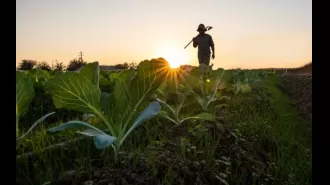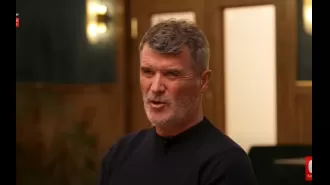Kerala sets an example for others to follow.
Kerala becomes first state in India to declare itself free from extreme poverty, inspiring policymakers and citizens to take action.
November 28th 2025.

On November 1st, a historic moment occurred in India's development story as Kerala officially declared itself free from extreme poverty. This achievement not only serves as an inspiration but also extends an invitation to policymakers, scholars, and citizens to learn from Kerala's success. It proves that with determination, effective governance, community engagement, and coordinated welfare systems, eradicating extreme poverty is possible even in a middle-income economy.
Despite India's rapid economic growth, extreme poverty has remained a persistent issue, defined as the lack of basic human needs such as food, housing, healthcare, and stable livelihoods. In June 2025, the World Bank revised its international extreme poverty line to $3.00 per day, accounting for global inflation and updated national poverty lines. This updated measure provides a more realistic view of the cost of living in low-income countries.
Kerala's journey towards eliminating extreme poverty began with a remarkable reduction in its poverty rate, declining from 59.8% in 1973-74 to an exceptionally low 0.55% in 2023, according to NITI Aayog's multidimensional poverty index. Despite being home to only 2.8% of India's population and covering 1.2% of the nation's land area, Kerala contributes over 4% to India's GDP. This achievement is a result of its exceptional human development outcomes, often referred to as the "Kerala phenomenon" or "Kerala model," which is rooted in a strong human development index, comprehensive social welfare programs, and impressive progress in education and healthcare.
The "Kerala model" was initiated by the state's first Left Democratic Front government under EMS Namboodiripad, with a focus on land reforms, social upliftment, and active participation from civil society. This approach has been sustained through a social democratic welfare approach. In 2021, the Extreme Poverty Eradication Programme was launched after the LDF's election victory. This ambitious four-year campaign was primarily implemented by Kudumbashree, Kerala's well-established state poverty eradication mission, in partnership with local self-governments. It stood out for its scale, precision, and multidimensional design. Through government welfare initiatives such as direct cash transfers and targeted micro-plans tailored to each household's specific needs, poverty rates were significantly reduced.
To ensure transparency, accountability, and community involvement, around 400,000 trained workers, including Kudumbashree members, ASHAs, local volunteers, and government officials, conducted door-to-door monitoring. Local committees and gram sabhas validated the outcomes, making it India's largest-ever door-to-door survey. As a result, 64,006 families, comprising over 100,000 individuals, were identified as living in extreme poverty across 1,032 local self-government institutions.
Rejecting a one-size-fits-all approach, each family received a personalized intervention plan that addressed their immediate, medium-term, and long-term needs. This approach's strength lies in its integrated nature, bringing together food security, housing, healthcare, income support, and social protection under one umbrella. By targeting the complex realities of poverty rather than just income-focused metrics, this multidimensional approach proved to be more effective.
The Extreme Poverty Eradication Programme integrated various state and central government schemes into a single coordinated framework. This included providing housing under the Life Mission Scheme, primary healthcare through the Aardram Mission, social pensions, ration cards, voter IDs, health insurance, educational support, and employment opportunities through MGNREGA. By 2025, almost 4,000 houses were built for homeless families, over 1,300 landless families were granted land titles, and 21,263 individuals received essential identity documents to access government benefits. Monthly food assistance reached over 20,600 families, including those unable to cook, through the use of community kitchens. Under the Ujj Vanam Project, thousands received skill training, entrepreneurship promotion, and job placement, leading to paid employment. Additionally, MGNREGA's expansion provided work opportunities for more than 34,000 families.
The Kerala Model is a valuable example of prioritizing social investments, effective governance, decentralization, and civil society involvement. It places a strong emphasis on social welfare and equitable distribution as fundamental pillars of development, making it a highly influential blueprint for other states seeking sustainable and inclusive growth. The author, Santosh Kumar Mohapatra, is an economist and columnist based in Odisha.
Despite India's rapid economic growth, extreme poverty has remained a persistent issue, defined as the lack of basic human needs such as food, housing, healthcare, and stable livelihoods. In June 2025, the World Bank revised its international extreme poverty line to $3.00 per day, accounting for global inflation and updated national poverty lines. This updated measure provides a more realistic view of the cost of living in low-income countries.
Kerala's journey towards eliminating extreme poverty began with a remarkable reduction in its poverty rate, declining from 59.8% in 1973-74 to an exceptionally low 0.55% in 2023, according to NITI Aayog's multidimensional poverty index. Despite being home to only 2.8% of India's population and covering 1.2% of the nation's land area, Kerala contributes over 4% to India's GDP. This achievement is a result of its exceptional human development outcomes, often referred to as the "Kerala phenomenon" or "Kerala model," which is rooted in a strong human development index, comprehensive social welfare programs, and impressive progress in education and healthcare.
The "Kerala model" was initiated by the state's first Left Democratic Front government under EMS Namboodiripad, with a focus on land reforms, social upliftment, and active participation from civil society. This approach has been sustained through a social democratic welfare approach. In 2021, the Extreme Poverty Eradication Programme was launched after the LDF's election victory. This ambitious four-year campaign was primarily implemented by Kudumbashree, Kerala's well-established state poverty eradication mission, in partnership with local self-governments. It stood out for its scale, precision, and multidimensional design. Through government welfare initiatives such as direct cash transfers and targeted micro-plans tailored to each household's specific needs, poverty rates were significantly reduced.
To ensure transparency, accountability, and community involvement, around 400,000 trained workers, including Kudumbashree members, ASHAs, local volunteers, and government officials, conducted door-to-door monitoring. Local committees and gram sabhas validated the outcomes, making it India's largest-ever door-to-door survey. As a result, 64,006 families, comprising over 100,000 individuals, were identified as living in extreme poverty across 1,032 local self-government institutions.
Rejecting a one-size-fits-all approach, each family received a personalized intervention plan that addressed their immediate, medium-term, and long-term needs. This approach's strength lies in its integrated nature, bringing together food security, housing, healthcare, income support, and social protection under one umbrella. By targeting the complex realities of poverty rather than just income-focused metrics, this multidimensional approach proved to be more effective.
The Extreme Poverty Eradication Programme integrated various state and central government schemes into a single coordinated framework. This included providing housing under the Life Mission Scheme, primary healthcare through the Aardram Mission, social pensions, ration cards, voter IDs, health insurance, educational support, and employment opportunities through MGNREGA. By 2025, almost 4,000 houses were built for homeless families, over 1,300 landless families were granted land titles, and 21,263 individuals received essential identity documents to access government benefits. Monthly food assistance reached over 20,600 families, including those unable to cook, through the use of community kitchens. Under the Ujj Vanam Project, thousands received skill training, entrepreneurship promotion, and job placement, leading to paid employment. Additionally, MGNREGA's expansion provided work opportunities for more than 34,000 families.
The Kerala Model is a valuable example of prioritizing social investments, effective governance, decentralization, and civil society involvement. It places a strong emphasis on social welfare and equitable distribution as fundamental pillars of development, making it a highly influential blueprint for other states seeking sustainable and inclusive growth. The author, Santosh Kumar Mohapatra, is an economist and columnist based in Odisha.
[This article has been trending online recently and has been generated with AI. Your feed is customized.]
[Generative AI is experimental.]
0
0
Submit Comment





